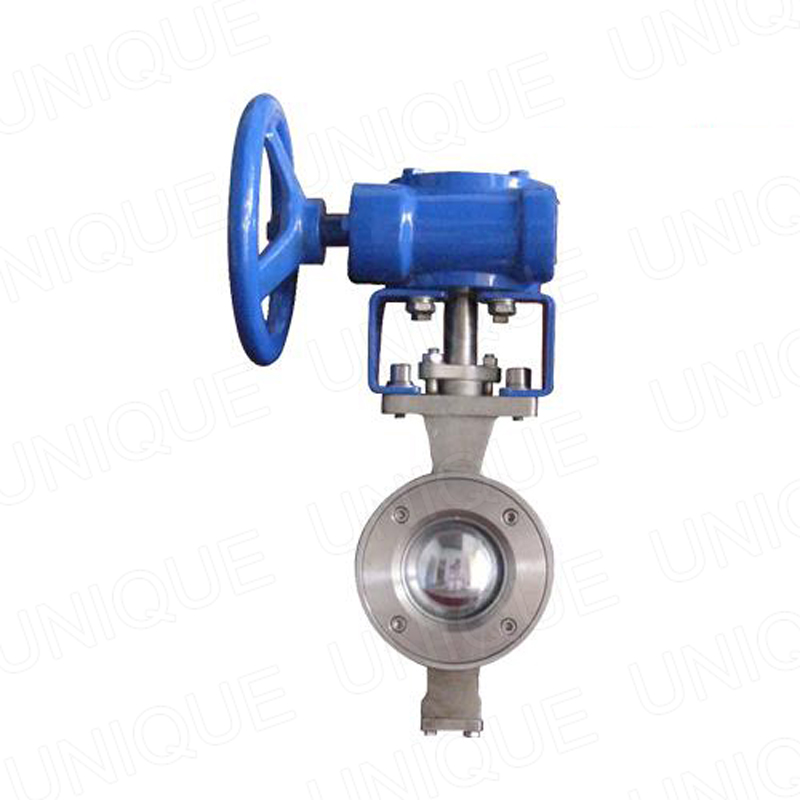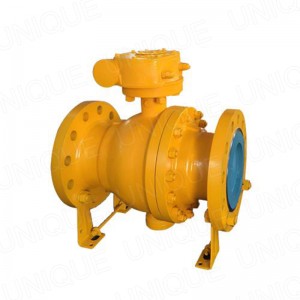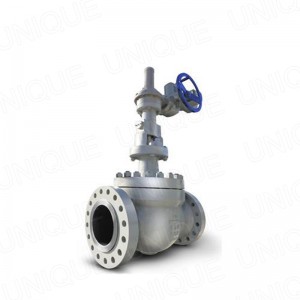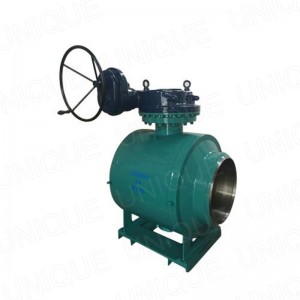Segment Ball Valve, Segment Wafer Ball Valve, V type Ball Valve
Introduction
This kind of ball valve belongs to the fixed ball valve and is also a single seat sealing ball valve. The adjustment performance is the best in the ball valve, the flow characteristic is equal percentage, and the adjustable ratio is up to 100:1. Its V-shaped slit has shearing action with the metal seat, especially suitable for media containing fibers, tiny solid particles, slurry.
The ball valve has the same 90 degree rotation, except that the plug body is a sphere with a circular through hole or passage through its axis. The ball valve is mainly used in the pipeline to cut, distribute and change the flow direction of the medium. It only needs to be rotated 90 degrees and the torque can be closed tightly. Ball valves are best suited for use as switching and shut-off valves, but recent developments have designed ball valves to provide throttling and control flow, such as V-ball valves.
Characteristics
Suitable for frequent operation, quick opening and closing, light weight, small fluid resistance, simple structure, small relative volume, light weight, easy maintenance, good sealing performance, not restricted by the installation direction, the flow direction of the medium can be arbitrary, no vibration, low noise .
1. Monolithic structure of valve body: The valve body of the clamp type and flange type V-type ball valve are all integral side-mounted structure, which has strong structural rigidity and is not easy to cause deformation and leakage.
2. Upper and lower self-lubricating bearings: The valve body is equipped with upper and lower self-lubricating bearings, which has large contact area with the valve stem, high bearing capacity and small friction coefficient, which reduces the torque of the valve.
3, the valve seat can be selected according to the needs of the medium and working conditions, metal hard seal or PTFE soft seal: metal hard seal seat sealing surface surfacing hard alloy, spherical hard chrome or spray welding, ion nitriding and other hardening treatment, The service life of the sealing surface is enhanced and the temperature resistance is improved; the soft sealing PTFE valve seat or the reinforced PTFE valve seat has good sealing performance and corrosion resistance, and has wide adaptability.
4. Economical and practicability: The valve body is light in weight, the valve stem torque is small, and the corresponding specifications of pneumatic or electric actuators are small, which is cost-effective compared with other types of regulating valves.
5, the medium adapts to a wide range: due to the shear force between the V-shaped opening and the valve seat, and the smooth and rounded flow path of the valve cavity, the medium is not easy to accumulate in the inner cavity, so it is suitable for liquid medium, Suitable for system control with fiber and solid particle media.
Design and manufacture standards
1. Flange standard: ASME B 16.5, EN 1092-1: 2001, GB/T 9113.1-2010, JB/T 79.1-1994, HG/T20592-2009
2. Pressure-temperature rating: ASME 816.34-2003, IS0 7005-1
3. Structure length standard: Clip type: enterprise standard Flange type: ISAS75.04-1995, IEC/DIN534-3-2
4, adapt to the temperature range: -29 °C -1 ~ 500C normal temperature type 2goC_2500C medium temperature type 2goC_3500C high temperature type
5, sealing and strength test standards
Strength and sealing test standard: GB/T 4213-2007
Hard seal level: When the user has no special requirements, the following table standard is used. When the user requests it, it can be executed according to GB/T 4213-2007?V level standard. The strength test pressure is 1.5 times of the nominal pressure. The seal test at the packing and flange is carried out at a pressure of 1.1 times the nominal pressure. The seat seal is tested according to the maximum pressure difference. When the maximum pressure difference is not clear, press 1.0MPa (water pressure) test, when the maximum pressure difference is less than 0.6MPa, the test is carried out at a pressure of 0.6MPa, and the medium is tested with water with corrosion and scale inhibitor.








